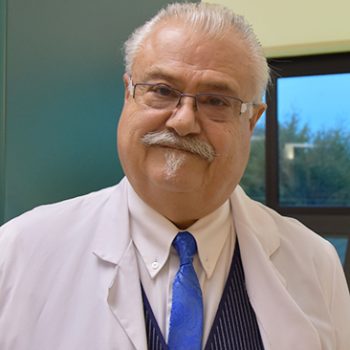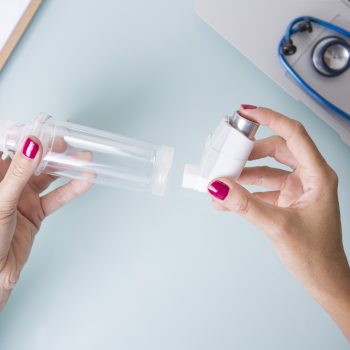Every year, the arrival of spring strikes almost one adult in five (19.5%) and even one under 30 in four. Pollen allergy, with all its annoying symptoms including repeated sneezing and red eyes, affects more and more people. The latest survey by the National Association of Self-Medication Drugs (Assosalute) shows that about 40% of adolescents suffer from it, an increasing share, which could reach 50% in 2022.
The temperature increase on the planet and the higher concentration of carbon dioxide in the air caused by pollution are also factors that in the coming years will help to make this symptom even more aggressive. We talked about it with Prof. Walter Giorgio Canonica, head of the Center for Personalized Medicine Asthma and Allergies of the Immuno Center of the Clinical Institute Humanitas, as well as former president of the Italian Society of Allergology, Asthma and Clinical Immunology.
How does allergy work?
There are thousands of different pollens circulating in the air, but fortunately, people with allergies only have to deal with a few of them. This means that the immune system is only affected by certain types of pollen. “When the pollens come into contact with the mucous membranes of the eyes, nose, throat, their protective outer shell is “dissolved” due to moisture and the proteins inside are released, the so-called allergens, generally harmless to most people,” explained Dr. Canonica. “It may happen, however, that the immune system, or the ” shield ” that defends our body from attacks by viruses and bacteria, misidentifies allergens as potentially harmful, reacting excessively in order to combat them and forming, through a series of complex steps, of specific antibodies, the immunoglobulins E (IgE) – continued the expert -. So, every time the body comes into contact with the same allergen, some cells of the immune system, called mast cells, release histamine, the substance responsible for classic allergic disorders”.
What strategies should be implemented?
To get some respite from the spring allergy we can implement some strategies that serve to keep away the discomfort and to enjoy with a bit of tranquility the spring warmth. The important thing is to avoid falling into some mistakes, as widespread as gross, and keep away from the many buffaloes that circulate on the subject. Here are some important clarifications:
Forecasts count
In fact, the production of pollen is at its highest on sunny days, especially in the middle of the day. For this reason, it is advisable that you ventilate the house and go outside in the morning, before ten o’clock, or in the evening. Gardening work? The best thing to do is to delegate them, avoiding also hanging up the laundry in the open air.
Rain is a precious ally against allergy: water destroys pollen, while humidity favors the closing of the anthers of the flowers, temporarily reducing the release of new granules. However, beware, when a strong thunderstorm is coming, because in the initial phases, the whirlwinds of air can raise the pollen, which increases the risk of allergic crises.
For first choice information it is good to rely on the pollen bulletin (www.pollineallergia.net) or on the provincial Arpav ones, which provide weekly forecasts updated daily, crossing the meteorological data with the pollen concentrations recorded in the various Italian cities.
Only one month of critical period
In Northern Italy, from April to September, pollens produced by grasses, which are wild herbaceous plants that take root mainly in the meadows, dominate, while in the South pollens from composite herbs, such as mugwort and ambrosia, and chenopodiaceae, such as amaranth and sugar beet, affect more people.
Wherever there is a proliferation of parietaria, a herb similar to nettle with a bloom that goes from March to November, widespread throughout the Mediterranean area, in both countryside and in the city.
The prick test is not the only available diagnostic test
When you suspect an allergy, you should avoid a dangerous do-it-yourself that leads to relying on the first tests that occur in range. Instead, it is better to rely on the allergist to undergo accurate and validated tests. Among these, the simplest and most used is the prick test, which serves to identify the cause of allergy. “The test can be performed at any age and at any time of the year – Canonica specifies -, on condition that the intake of antihistamines is suspended at least one week before in order not to alter the results. But the prick test is not the only diagnostic investigation available. If necessary, this test may be associated with other findings, such as spirometry, which evaluates airway obstruction; fiber optic nasal endoscopy, which inspects the cavities of the nose; nasal cytology, which analyzes the cells of the mucosa. If necessary, in order to ascertain the diagnosis it is possible to use the dosage of immunoglobulins, a blood test useful to dose these antibodies specific for each allergen. In the case of difficult allergies, the new Alex molecular test, Allergy Explorer, is indicated: “This test, which can detect unexpected allergens, is performed through a simple blood sample, which is analyzed by a special machine similar to a computer that remembers the “identity card” of 282 components, including 125 proteins, present in the pollen – explained Prof. Canonica -. The result, which arrives after about ten days, traces a real mapping of the elements that can trigger allergy. In this way it is possible to propose a personalized therapy, tailored to the individual patient”.
Antihistamines do not prevent driving
Despite their effectiveness, these drugs are often accepted with difficulty by those who have to take them, as they are accused of causing drowsiness, loss of lucidity, lack of concentration. “This is true for the older antihistamines, those of the first generation, such as diphenhydramine, chlorfenyramine, triprolidine, dimenhydrinate, which act on H1 receptors of histamine, but also on other types of receptors at the level of the central nervous system, causing precisely soporific, but also other side effects, such as dry mouth, visual impairment, constipation, urinary retention,” clarifies Canonica. “However, this does not concern the newest antihistamines, of second generation, such as loratadine, desloratadine, cetirizine, levoetyrizine, bilastine, ebastine, rupatadine, which are more selective towards the H1 and overcome with more difficulty the blood-brain barrier, reaching less easily the central nervous system. They are therefore better tolerated and the drowsiness is very limited”.
The cortisone is a useful remedy
Corticosteroids, such as cortisone, prednisone, triamcinolone, betametasone, dexamethasone, hydrocortisone butyrate, hydrocortisone acetate, are a valuable remedy for reducing the body’s defensive response. In particular, in rhinitis, while in asthma they decrease inflammation and improve breathing. They are available in the form of nasal sprays or solutions/dust by inhalation, while those by mouth are not recommended, given the side effects.
When, on the other hand, the so-called air hunger, or asthma, occurs, it is advisable to use bronchodilators, which cause a relaxation of the muscles of the respiratory tract, allowing a greater flow of air to the lungs, facilitating breathing and reducing coughing and breathlessness.
Children under six years of age can also take medication
Today, allergic rhinitis affects about 7% of children between the ages of six and seven. Furthermore, a study conducted by the Italian pediatric allergy network shows that out of 1,360 children with an average age of 10 years, the 82% are sensitized to at least three pollens and 48% to at least six. The most at risk are young children who have one or both allergic parents, since there is a family predisposition on a genetic basis to develop the disorder. Once the allergy has been established, second-generation antihistamines can be used: some can be administered as early as two years of age.
Vaccination does not prevent from allergies
It’s called a vaccine, but it’s specific immunotherapy. Unlike classic vaccinations to prevent an infection or disease in a healthy person, the “vaccine” for allergy serves to control the disease and is able to combat the problem at the root, giving a “regulated” to the immune system, so as to reduce the production of antibodies, immunoglobulins. Various researches have demonstrated the effectiveness of the treatment, including a study published in 2017 in Expert Review of Clinical Immunology by researchers of the University Versailles Saint Quentin of Suresnes, France, on more than 70 thousand patients. In addition to dismantling the mechanism underlying the allergy, this type of therapy has also proven to be effective in containing the risk of related diseases, such as sinusitis, nasal polyps, enlargement (hypertrophy) of adenoids in the smallest. In the case of pollen allergies, the vaccine is administered from the winter months until the end of the season.







